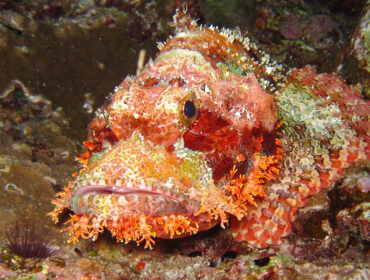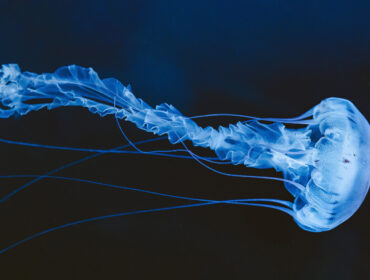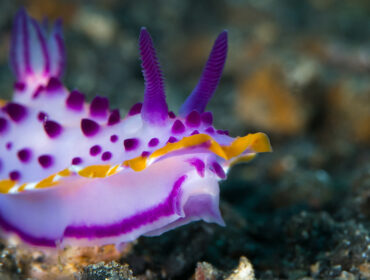Rays are some of the most beautiful, mysterious-looking creatures to inhabit the ocean. Generally docile, these cartilaginous fish are closely related to sharks. Often rays are filter feeders, with their diet consisting of plankton. The following 5 species include some of the most magnificent types of ocean rays divers may come across. How many have you seen on your dives?
Deepwater Stingray
The deepwater stingray can reach lengths of 9 feet and is covered in denticles, structures similar to teeth that protect some rays and sharks. The deepwater stingray is usually deep purplish brown, with the underside much lighter. The fish defends itself using venomous spines. When cornered by humans this beautiful creatures thrashes about, potentially injuring careless divers.
Sixgill Stingray
This stingray is defined by its six gills, one more than most types of ocean rays. The strangest feature of this creature is the long triangular “snout” jutting out from its body. The snout serves to aid in electrical detection of prey. With a weak jaw and soft skin, the creature generally preys on boneless sea creatures.
Porcupine Ray
The porcupine ray, while lacking the sharp spine of other rays, gets its name with the sharp thorns all over its disc and tail, which serve to protect the creature. The fish is defined by a thick, round disc, and spends much of its time hovering over seabeds hunting small crustaceans and boned fish.
Spiny Butterfly Ray
Found along Atlantic coasts, this large ray can reach up to 7 feet in disc width. This predatory ray hunts species from gastropods to small sharks, using their pectoral fins to deliver strong blows to victims. The fish are generally harmless around humans, though the spine can deliver painful wounds if grabbed.
Manta Ray
Manta rays are among the largest species of rays, with the Giant Oceanic Manta Ray reaching 30 feet in width! The rays may travel solitary, though they have been seen in groups of up to 50. Manta rays feed using their cephalic fins, corralling plankton into a group before going in for the meal. Found in temperate and tropical ocean zones, these rays are a popular sight for divers.




